The Siberian is a landrace variety of domestic cat, present in Russia for centuries,and more recently developed as a formal breed, with standards promulgated since the late 1980s.
 They vary from medium to medium-large in size.A longer name of the formal breed is Siberian Forest Cat,but it is usually referred to as the Siberian or the Siberian cat.Another name for the formal breed is the Moscow Semi-Longhair.The cat is an ancient breed that is now believed to be ancestral to all modern long-haired cats.The cat has similarities with the Norwegian forest cat, to which it is likely closely related.It is a natural breed of Siberia and the national cat of Russia.While it began as a landrace, it is selectively bred and pedigreed today in at least seven major cat fancier and breeder organisations. The colorpoint variant of the breed is called the Neva Masquerade by some registries, including Fédération Internationale Féline (FIFé).
They vary from medium to medium-large in size.A longer name of the formal breed is Siberian Forest Cat,but it is usually referred to as the Siberian or the Siberian cat.Another name for the formal breed is the Moscow Semi-Longhair.The cat is an ancient breed that is now believed to be ancestral to all modern long-haired cats.The cat has similarities with the Norwegian forest cat, to which it is likely closely related.It is a natural breed of Siberia and the national cat of Russia.While it began as a landrace, it is selectively bred and pedigreed today in at least seven major cat fancier and breeder organisations. The colorpoint variant of the breed is called the Neva Masquerade by some registries, including Fédération Internationale Féline (FIFé).
There are claims that it is hypoallergenic and produces less Fel d1 than other cat breeds.
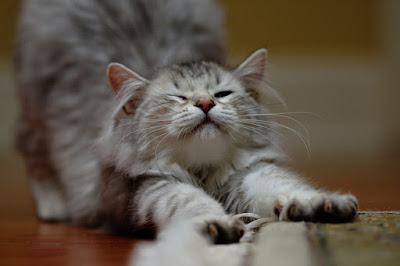 The cat was first mentioned in a book by Harrison Wier, which included information of the earliest cat shows in England in 1871.Siberians first arrived in the United States in 1990. Although gaining in popularity, the expense of importing the cats from Russia keeps the breed relatively rare outside of Europe. In the Russian cat fancy, each cat club devises its own cat standards. This fact led to much confusion in the US and other countries when the first Siberians were arriving and many appeared quite different from each other, depending on what area of Russia they originated from. One of the earliest written Siberian standards was publicized by the Kotofei Cat Club in St. Petersburg in 1987.
The cat was first mentioned in a book by Harrison Wier, which included information of the earliest cat shows in England in 1871.Siberians first arrived in the United States in 1990. Although gaining in popularity, the expense of importing the cats from Russia keeps the breed relatively rare outside of Europe. In the Russian cat fancy, each cat club devises its own cat standards. This fact led to much confusion in the US and other countries when the first Siberians were arriving and many appeared quite different from each other, depending on what area of Russia they originated from. One of the earliest written Siberian standards was publicized by the Kotofei Cat Club in St. Petersburg in 1987.Body
 Known to be an exceptionally agile jumper, the Siberian is a strong and powerfully built cat, with strong hindquarters and large, well rounded paws and an equally large full tail. They have barrelled chests and medium/large sized ears, large eyes, broad foreheads, and stockier builds than other cats.Their large round eyes give an overall sweet expression to their face.Siberians have a slight arch to their back, because their hind legs are a bit longer than the front legs. This shape contributes to their incredible agility and athleticism.
Known to be an exceptionally agile jumper, the Siberian is a strong and powerfully built cat, with strong hindquarters and large, well rounded paws and an equally large full tail. They have barrelled chests and medium/large sized ears, large eyes, broad foreheads, and stockier builds than other cats.Their large round eyes give an overall sweet expression to their face.Siberians have a slight arch to their back, because their hind legs are a bit longer than the front legs. This shape contributes to their incredible agility and athleticism.While there is no truly hypoallergenic cat or dog, the decreased dander qualities of the Siberian coat have been noted and commented on for almost ten years. While there is little scientific evidence, breeders and pet owners claim that Siberians can be safe for many allergy sufferers. Since females of all feline breeds produce lower levels of Fel d1, breeders often suggest that allergic families adopt female cats. Allergy sufferers are advised to check their reactivity directly with the parent cats from whom they plan to adopt a kitten. Many people believe that the breed produces less Fel d1, the primary allergen present on cats.
In 1999, Indoor Biotechnologies tested the fur of four cats for Fel d 1; a mixed breed, two Siberians, and an Abyssinian.The results showed the Siberian and Abyssinian cat fur as having lower Fel d 1 levels than the mixed breed cat.Indoor Biotechnologies cautions that the Siberian levels were still high, and that the mixed breed sample was "exceptionally high."Indoor Biotechnologies warns against using these results to make decisions of pet ownership.
This test of fur allergen levels is cited by many Siberian breeder websites as evidence the breed is hypoallergenic. Critiques include that the sample size is below statistical significance, was submitted by a Siberian breeder, and as mentioned, one cat was found to have Fel d1 allergen levels of 62,813 micrograms (roughly 60x higher than any published professional study).
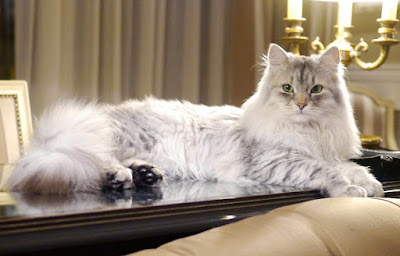 A not-for-profit association of breeders, (Siberian Research Inc), was founded in 2005 to study allergen levels and genetic diseases in the Siberian breed. As of March 2010, fur and saliva samples from over 300 Siberians have been submitted for analysis, many directly from a veterinarian. Salivary Fel d1 allergen levels in Siberians ranged from 0.08-27 µg per ml of saliva, while fur levels ranged from 5-1300 µg. The high-end of these ranges is consistent with results from prior studies, though the low end is below expected results.
A not-for-profit association of breeders, (Siberian Research Inc), was founded in 2005 to study allergen levels and genetic diseases in the Siberian breed. As of March 2010, fur and saliva samples from over 300 Siberians have been submitted for analysis, many directly from a veterinarian. Salivary Fel d1 allergen levels in Siberians ranged from 0.08-27 µg per ml of saliva, while fur levels ranged from 5-1300 µg. The high-end of these ranges is consistent with results from prior studies, though the low end is below expected results. All Siberians tested were found to produce some Fel d1, with the highest levels being found in Siberians that have silver coloured fur. About half of Siberians were found to have Fel d1 levels lower than other breeds, while under twenty percent would be considered very low. Within the low group, males and females had comparable allergen levels.
Reproduction
Siberian cats tend to come into reproductive readiness earlier than other breeds, sometimes as young as five months. It is thought that this is related to the breed's closeness to its natural wild state; feral cats often die young due to harsher natural conditions. Achieving reproductive ability early and having large litters provides a biological balance to this. On average, a Siberian litter consists of five to six kittens, as compared to the average litter of three to four kittens in breeds who have been registered as pedigreed cats. However, Siberian litters may consist of as few as one and as many as nine kittens.
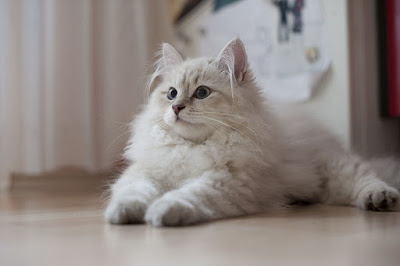 Siberian cats are excellent parents, with the fathers helping to care for kittens if they are allowed access to the nest. Parents are often strongly bonded and some mothers will only mate with one male. Atypical for cats, juvenile male Siberians have been seen cuddling and grooming their cousins and siblings. Siberians, due to their communal nature, often do better in pairs in captivity.
Siberian cats are excellent parents, with the fathers helping to care for kittens if they are allowed access to the nest. Parents are often strongly bonded and some mothers will only mate with one male. Atypical for cats, juvenile male Siberians have been seen cuddling and grooming their cousins and siblings. Siberians, due to their communal nature, often do better in pairs in captivity. Females that have not been spayed have been noted to have litters as late as nine or ten years. However, kitten mortality is generally lower when a dam (breeding female) is between 18 months and six years of age. This is due to several factors: physical and emotional maturation of the dam, health and vitality of the dam, and a natural predisposition to healthier offspring from younger mothers.
 Males can father kittens from as young as five months to over ten years. In regions where the breed is rare and expensive a long term breeding career for a pedigreed male can create a risk of popular sire effect, in which one male has an overly large genetic influence on the breed. In Eastern Europe, where the breed is common and less expensive, this issue is less likely to arise than elsewhere.
Males can father kittens from as young as five months to over ten years. In regions where the breed is rare and expensive a long term breeding career for a pedigreed male can create a risk of popular sire effect, in which one male has an overly large genetic influence on the breed. In Eastern Europe, where the breed is common and less expensive, this issue is less likely to arise than elsewhere. During the early 1990s, it was expensive and difficult to locate and import Siberians. Therefore, inbreeding became common. Because the breed is relatively new to registration and breed books are open, breeders are able to add foundation stock to the breed. This reduces the level of relatedness within the breed, and increases vigor in the breed.
In Popular Culture
The variety can be seen in Russian paintings and writings dating back hundreds of years. This sets them apart from breeds that are the result of fairly recent selective breeding.
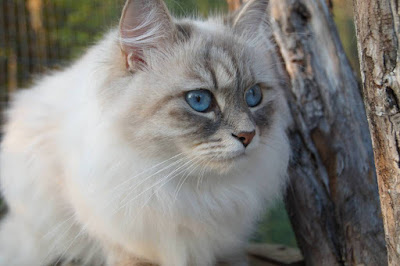 Vonda N. McIntyre introduces a Siberian Forest Cat as the pet of Spock's cousin Stephen in Enterprise the First Adventure (Pocket Books, 1986).
Vonda N. McIntyre introduces a Siberian Forest Cat as the pet of Spock's cousin Stephen in Enterprise the First Adventure (Pocket Books, 1986). At least one traditional Russian folktale, collected by Prof. A. N. Afanas'ev, features a Siberian cat called Kotofej Ivanovich.
A Siberian cat, Dorofei, is owned by Russian Prime Minister Dmitry Medvedev, and another by former Soviet president Mikhail Gorbachev.WBZ-AM talk radio host Steve LeVeille mentions his Siberian, Max, on his Boston-based program.
The 2016 movie Nine Lives features a Siberian.
In the webcomic Hetalia: Axis Powers, the character Ivan "Russia" Braginski owns a Siberian cat, as shown in the strip titled "Cat Conference".
source: Wiki

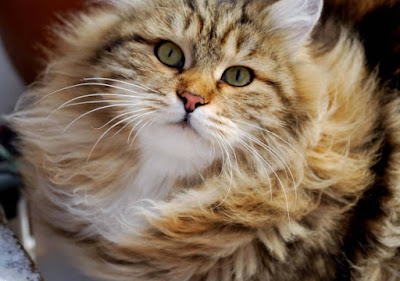














Nice Post...
ReplyDeleteI'm having very interesting information regarding Sphynx Cats available for sale!
Very Nice Blog!!!
ReplyDeletePlease have a look about Pomeranian Puppies for Sale United States
Teacup Pomeranian Puppies for Sale
Teacup Pomeranian Puppy for Sale near me
Pomeranian Puppies for Sale Florida
Pomeranian Puppy for Sale Craigslist!